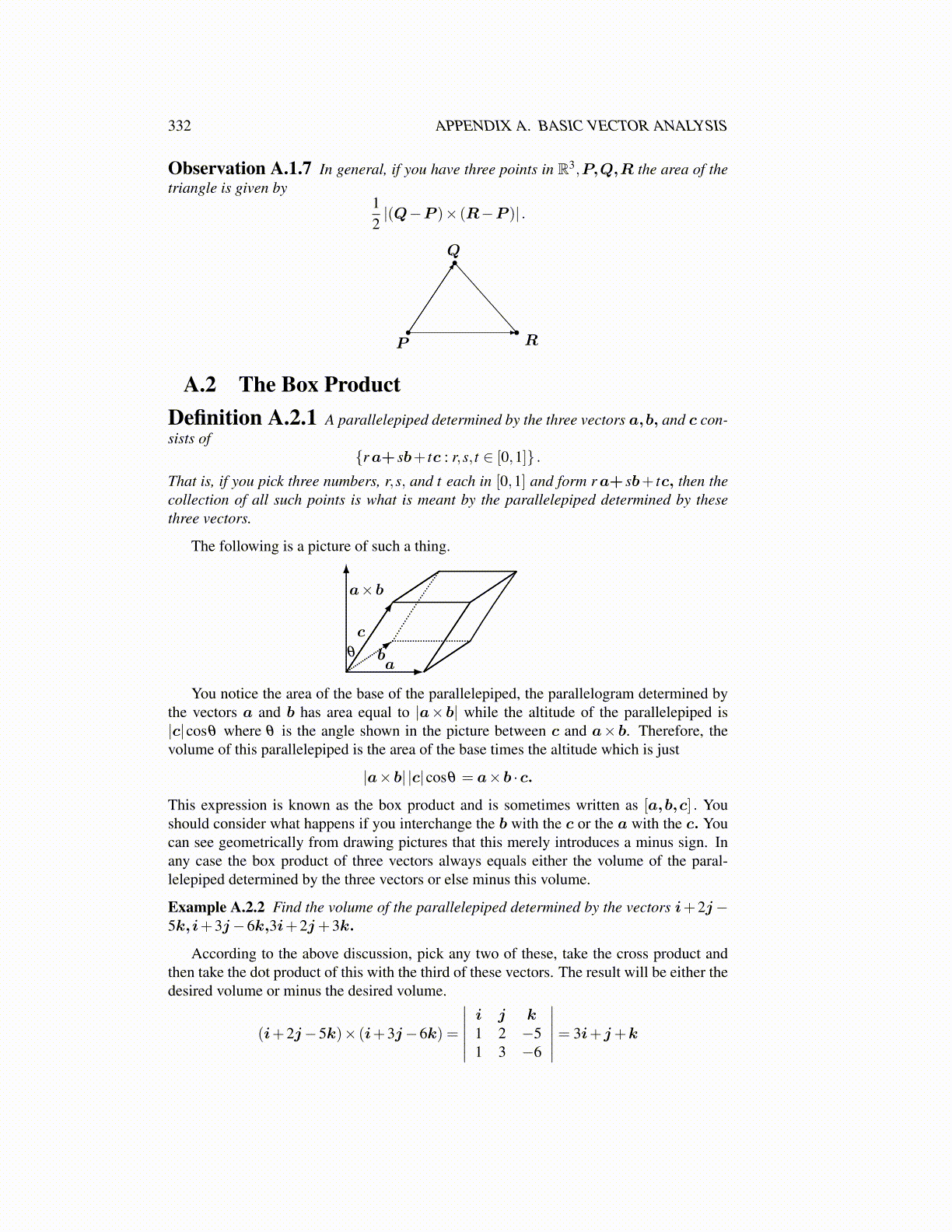
332 APPENDIX A. BASIC VECTOR ANALYSIS
Observation A.1.7 In general, if you have three points in R3,P,Q,R the area of thetriangle is given by
12|(Q−P )× (R−P )| .
P
Q
R
A.2 The Box ProductDefinition A.2.1 A parallelepiped determined by the three vectors a,b, and c con-sists of
{ra+ sb+ tc : r,s, t ∈ [0,1]} .That is, if you pick three numbers, r,s, and t each in [0,1] and form ra+ sb+ tc, then thecollection of all such points is what is meant by the parallelepiped determined by thesethree vectors.
The following is a picture of such a thing.
ab
c
a×b
θ
You notice the area of the base of the parallelepiped, the parallelogram determined bythe vectors a and b has area equal to |a×b| while the altitude of the parallelepiped is|c|cosθ where θ is the angle shown in the picture between c and a×b. Therefore, thevolume of this parallelepiped is the area of the base times the altitude which is just
|a×b| |c|cosθ = a×b ·c.
This expression is known as the box product and is sometimes written as [a,b,c] . Youshould consider what happens if you interchange the b with the c or the a with the c. Youcan see geometrically from drawing pictures that this merely introduces a minus sign. Inany case the box product of three vectors always equals either the volume of the paral-lelepiped determined by the three vectors or else minus this volume.
Example A.2.2 Find the volume of the parallelepiped determined by the vectors i+2j−5k,i+3j−6k,3i+2j+3k.
According to the above discussion, pick any two of these, take the cross product andthen take the dot product of this with the third of these vectors. The result will be either thedesired volume or minus the desired volume.
(i+2j−5k)× (i+3j−6k) =
∣∣∣∣∣∣i j k1 2 −51 3 −6
∣∣∣∣∣∣= 3i+j+k